Physiotherapy for Back Pain
Helping you navigate your back pain journey
At The Spinal Physiotherapy & Sports Medicine Clinic we specialise in the treatment of back and neck pain. 80% of people get back problems at some stage in their lives but living with back pain does not have to be an option. From the acute back injury to more chronic problems our expert Chartered Physiotherapists have seen it all and in the last 10 years alone have helped over 7 thousand people navigate this journey. Take a look at our testimonials page to hear what they have had to say for themselves.
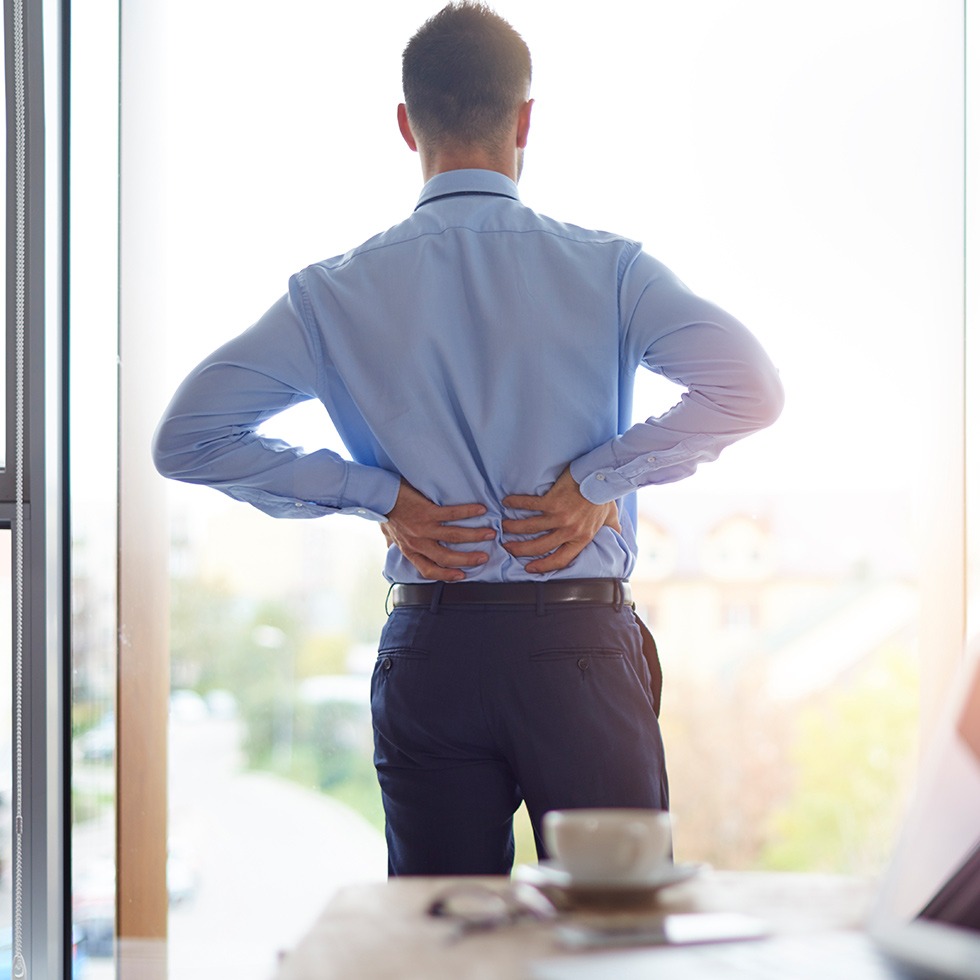
Mechanical Low Back Pain
The most common cause of back ache is known as Mechanical low back pain. The lower back or Lumbar spine is made up of 5 vertebrae which are circular shaped bones separated by a disc which acts like a shock absorber between the bones to cushion the forces generated as we move or put pressure through the spine in bending, lifting and sitting.
The Lumbar spine is arched in what is known as a Lordosis. The 3rd vertebrae (L3) is the highest point of this arch. When we stand up straight or lie down on our backs the lordosis is maintained. When we bend forward or sit down the Lordosis flattens especially at the L3 level and this increases the pressure in the spine and squeezes the discs, bringing the vertebrae above and below the discs closer together.
The least pressure put through the spine is when we lie down flat. This acts as a natural traction to the spine and we are therefore usually a few millimetres taller in the morning than we are by the end of the day. By sitting we increase the pressure in the Lumbar spine alone by about 1.7 times our body weight. This is when we sit properly, if you slouch that pressure increases further.
The spine is generally strong enough to tolerate this pressure for about 20 minutes, before the discs start to absorb the shock and the lordosis flattens to accommodate for the strain. Most of us will not have any problem with this and won’t be aware that your back is having to take this strain, especially if you are busy with work and have your mind on other things.
However, if your job primarily involves sitting either at a desk or driving or travelling then over the course of the day your spine is getting stiffer and stiffer. Most people roll into a ball in bed at night for perhaps 8 hours. They then sit for meals, drive to work, sit at work, drive home and then sit down and watch the telly before going off to bed again. This means that the spine is bent for approximately 20 hours out of 24 a day! On any given day this may not be a problem but sitting at a desk day after day, driving long distances without a break or repeatedly bending your back, leads to a gradual stiffening of the spine that will eventually result in low back pain.
Over the weeks and months and years, that leads to significant wear and tear on the spine and causes the joints to become stiffer and lose flexibility. When you lose that natural flexibility, trying to do 100% of activity on less than 100% available range of movement leads to injury.
This can range from occasional stiffness that you can walk off comfortably to severe low back pain and associated muscle spasm. It is called Mechanical back pain because it is caused by the mechanical loading of the spine in various static positions for prolonged periods of time.
This is quite easily prevented by changing some simple habits and making these changes routine in your day to day life.
- Sit up properly and arrange your work station to best suit your height and shape.
- Stand up every 15-20 minutes to recover the arch in your spine, both at home and at work.
- Go for a good walk (40 minutes) per day, ideally in one go or split it in two, 20 minutes at lunch and 20 minutes when you finish work.
- Try to stretch regularly through the day.
- Don’t drive for greater than one hour without getting out to stretch your legs.
- See a Chartered Physiotherapist if you have pain that doesn’t settle down in 48 hours.
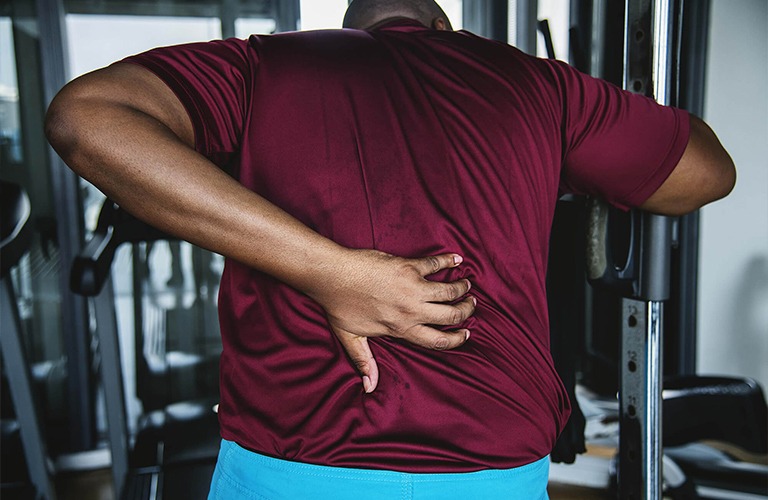
Sciatica
Another common problem resulting in back pain is the so called Trapped nerve or Sciatica. Sciatica is a catch all diagnosis for back pain resulting in pain down the leg often with pins and needles in the foot. The sciatic nerve is the largest nerve in the body and is made up of the roots of 5 nerves coming out from the spinal cord. These meet to form the trunk of the nerve which passes from the back down through the pelvis and into the leg all the way to the big toe. Along its journey down the leg it gives off branches to various structures in the leg like joints and muscle to give them their nerve supply.
People are under the misconception that a nerve is a thin wiry structure that is difficult to see. The sciatic nerve as it passes through the pelvis is about as thick as your thumb, so it is not uncommon for it to be the source of pain as a result of entrapment in or around a structure it passes through during its course.
The sciatic nerve is most likely to be “trapped” in the spine as it leaves the vertebrae to travel to the pelvis. This could be any one of the 5 vertebrae of the lumbar spine. Depending at which level of the spine it gets caught at, the symptoms may vary, with the pain travelling to different regions depending on its entrapment. This will also mean various levels of pain or disability as a result of where the nerve is “trapped” and what structures it supplies.
As with mechanical back pain above, if the vertebrae of the spine get closer together the space for the nerves to travel out from the spine will become narrower. If the space narrows further as a result of deteriorating mechanical low back pain injury to the spine, the nerve exiting the vertebra may become pinched resulting in referred pain down the leg.
So, what can you do to prevent sciatica? It’s the same as for Mechanical low back pain above.
- Sit up properly and arrange your work station to best suit your height and shape.
- Stand up every 15-20 minutes to recover the arch in your spine, both at home and at work.
- Go for a good walk (40 minutes) per day, ideally in one go or split it in two, 20 minutes at lunch and 20 minutes when you finish work.
- Try to stretch regularly through the day.
- Don’t drive for greater than one hour without getting out to stretch your legs.
- See a Chartered Physiotherapist if you have pain that doesn’t settle down in 48 hours.
But what do you do if you already have Sciatica? The important thing is to stay mobile. Bed rest is not an appropriate treatment for sciatica but most people will find it more comfortable to lie down when resting, especially with the knees bent and feet flat on the floor. Try to walk around as much as possible. Don’t sit if you can avoid it and only sit in a firm chair if necessary with your knees lower than your hips so you can sit up straight. It may be necessary to take some anti-inflammatory medication for the pain but check with your doctor first if necessary. Heat is also useful to relax the muscles of the spine which can feel very tight or spasm when you have trapped the nerve. Use heat, such as a hot pack or hot water bottle wrapped in a towel for about 20 minutes at a time, but you can use it 3-4 times a day if necessary. Not too hot, just comfortable.
If the pain has not improved in 48 hours, see a professional such as a chartered Physiotherapist for advice and treatment. “Sciatica” can present in different ways and have different consequences depending on the injury. You will hear many stories from people who have been told they have sciatica and they will all have a different answer as to what you should do and shouldn’t do. If you have a problem, consult a professional who can give you the correct diagnosis for your specific problem and how best to manage it.
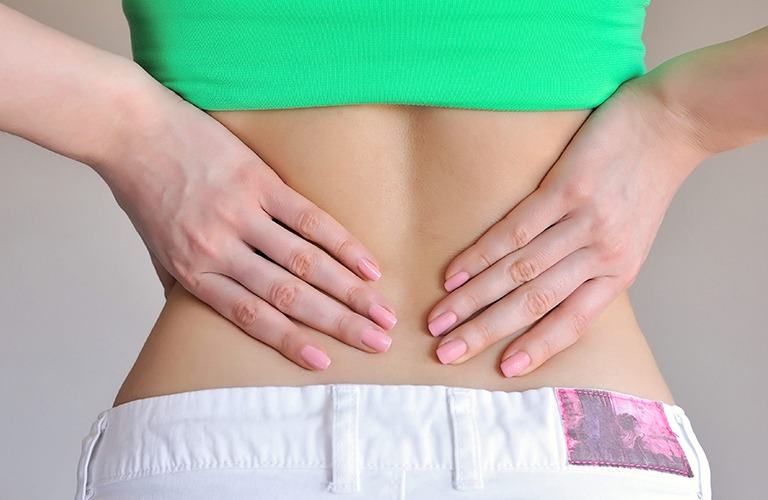
Prolapsed “Slipped” Disc
Many people have heard of the term “Slipped Disc”. This is a misleading term as the disc itself can not move in or out. It can however change shape. Just like your ear, the outer layers of the disc are rings of semi rigid cartilage that can mould and twist as we move. This is known as the annulus of the disc. The middle of the disc is filled with a fluid type pulp called the nucleus which will also move depending on the pressures put through the disc.
For example, when we bend forward, the disc is squeezed at the front, this forces the pulp in the disc to be pushed backwards to compensate for the change in pressure. If this is done repeatedly, the pulp in the disc will eventually push into the annulus of the disc causing it to change shape and bubble. Similarly to a Rugby player who gets cauliflower ear from the friction generated in a scrum, the ear changes shape, as can the disc. When the disc forms this bubble to release the pressure generated by repeated bending or lifting or indeed sitting, it is known as a disc herniation. If this herniation becomes large enough for the disc to bulge significantly that it hits a nerve running close by, it becomes known as a prolapsed disc or “Slipped disc”.
Prolapsed discs can present with pain similar to Sciatica, but a Physiotherapist can assess the situation to see what damage has occurred and give the most appropriate advice. If you think you may have a prolapsed disc then see someone straight away. If you can’t get to anyone then follow the advice for sciatica by keeping as mobile as possible with short periods of lying down with the knees bent and feet flat on the floor.
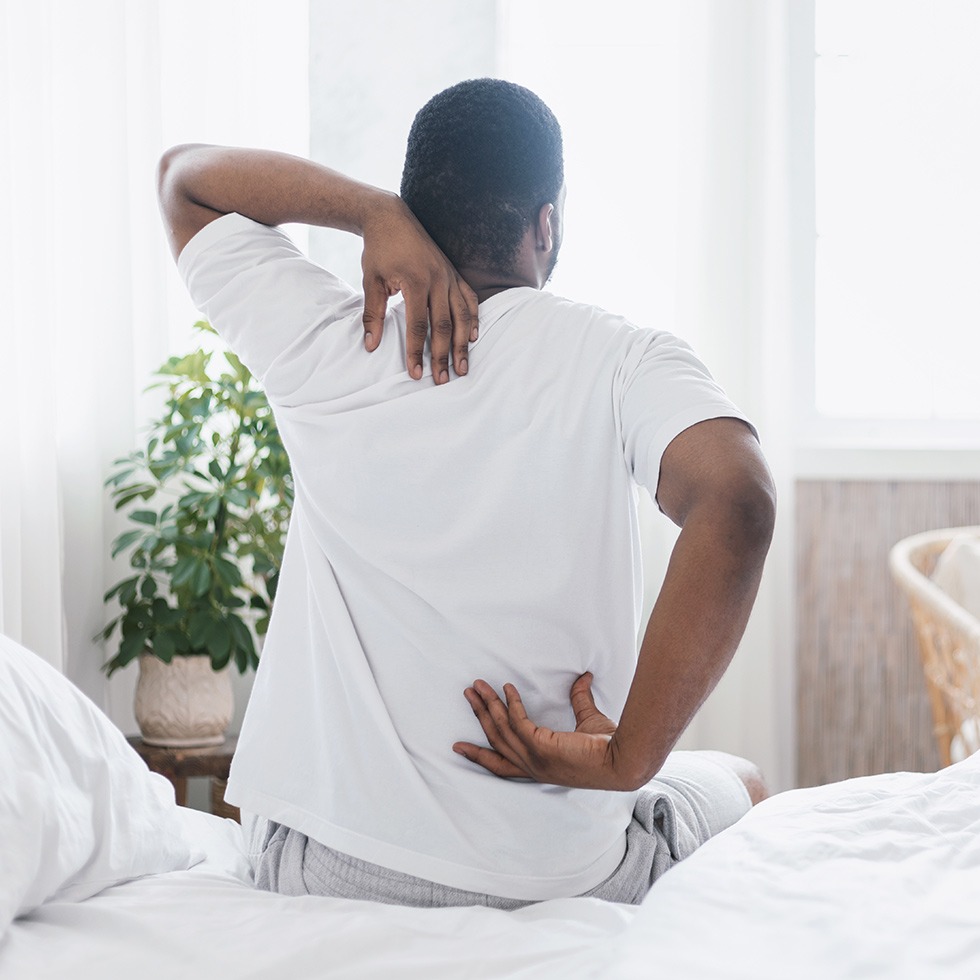
Osteoarthritis of the Spine
The spine is made up of many moving parts. Each joint in the spine hinges on the vertebrae above and below it allowing us to move in all directions. Excessive movement of the joints will lead to wear and tear in the joints. This is known as degeneration.
We all will have some degree of degenerative changes as we get older, however in some people this is more significant than others. All areas of the spine are subject to degenerative changes but the parts that move the most will suffer the most. Therefore the neck and lower back are the areas greatest affected.
Family history can account for significant degeneration of the joints of the spine and stress to the spine will compound pre-existing weakness. As mentioned above frequent loading of the spine in static postures is the greatest offender. Sitting most of the day and getting very little variety of exercise will increase the strain on the low back and neck. Bending without taking a break if working in the garden or doing DIY all add to the problems. Obviously lifting poorly and items beyond your capability also contribute to the problem.
Spondylosis is the name given to degeneration of the joints of the spine. This usually results in small increases in boney growth in the joints as the cartilage covering the bone starts to wear away. These bony projections, known as osteophytes, cause the spaces in the joints to narrow and the spine to become stiff. This stiffness leads to increased strain on the spine and further degeneration will continue.
The stiffness in the spine can be mild at first and not always painful. Indeed some people can have very stiff spines with hardly any pain. Most people unfortunately will have increasingly painful backs as the degeneration progresses. If you have read the information above you will now know that this degenerative process will cause mechanical back pain, increase the chances of developing a trapped nerve and possibly a prolapsed disc.
There are options to help. Early intervention is key. A good exercise program to improve strength and improve flexibility is essential. Regular changes in position to reduce the load on the spine and a good diet to improve bone strength and reduce weight will all help. A physiotherapist can guide you through these stages and also mobilise or manipulate the spine to decrease pain and improve movement. Occasionally a course of pain killers may be necessary but it is best to try and treat arthritis of the spine with physiotherapy and exercise.
If the degeneration becomes too severe pain killing injections may help, such as a nerve block or epidural. Surgery is a final answer but is required in very few cases. It will usually involve fusing together with metal rods and screws the joints of the back that are causing the most problems. It can help to reduce the pain but it will greatly stiffen the spine and therefore should be considered only when necessary.
How can you prevent or reduce significant degenerative changes to the spine:
- Sit up properly and arrange your work station to best suit your height and shape.
- Stand up every 15-20 minutes to recover the arch in your spine, both at home and at work.
- Go for a good walk (40 minutes) per day, ideally in one go or split it in two, 20 minutes at lunch and 20 minutes when you finish work.
- Try to stretch regularly through the day.
- Don’t drive for greater than one hour without getting out to stretch your legs.
- See a Chartered Physiotherapist if you have pain that doesn’t settle down in 48 hours.
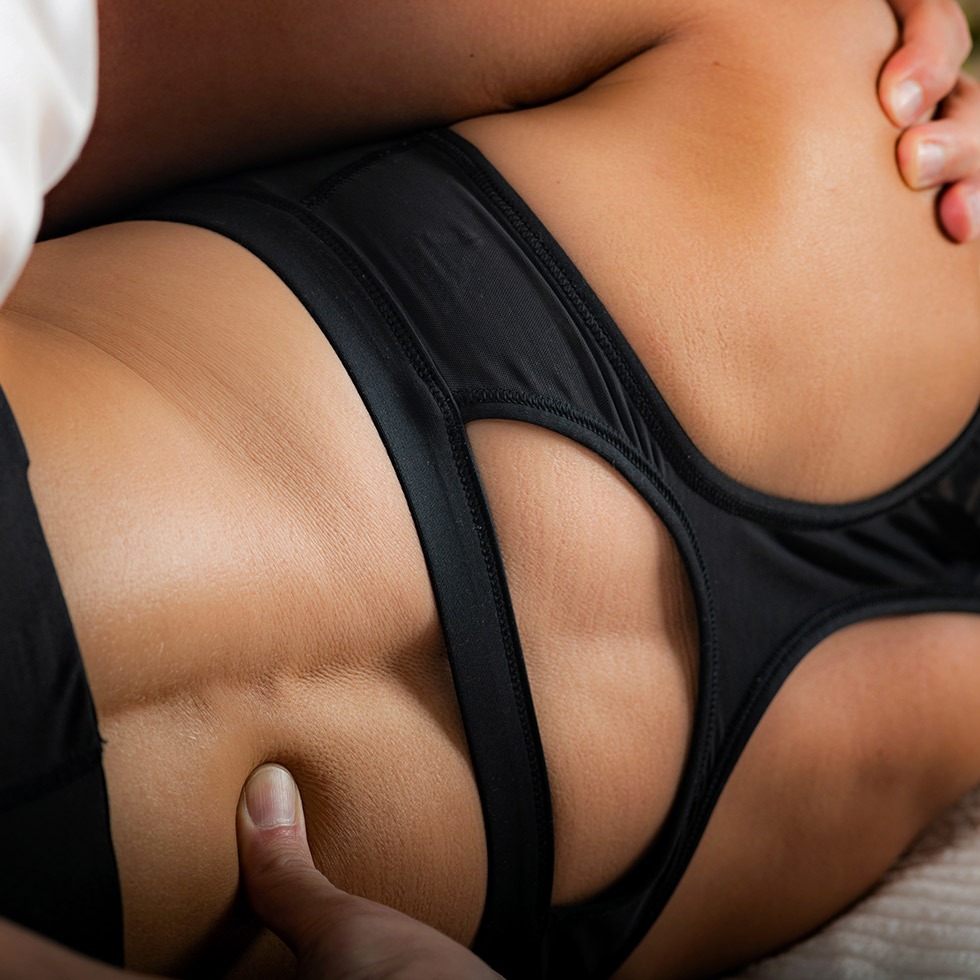
Spinal Stenosis
As mentioned with Spondylosis the joints of the spine are susceptible to degenerative wear and tear. This wear and tear is at the small joints at the side of the spine where the nerves exit the vertebrae to travel into the arms and legs. Spinal stenosis occurs when the large central space in the middle of the vertebrae containing the spinal cord starts to narrow as a result of increasing bone growth.
The pain of spinal stenosis is very similar to that of trapped nerves and / or disc prolapse but may affect one of both, arms or legs. Pain is usually worse when walking and relieved by sitting. This is the opposite to mechanical back pain, arthritis of the spine and disc prolapse.
Spinal stenosis can be a serious problem and professional help is advised as soon as possible. Investigations should be carried out such as an x-ray and perhaps a scan to see the extent of the narrowing of the spinal canal.
Online Consultation
We understand it’s not always possible to get to the clinic or you just have some questions that you’d like to discuss with an expert and get some advice.
With an online consultation you can have a 30 minute Zoom/Skype appointment with an experienced Chartered Physiotherapist who will discuss your concerns and offer appropriate advice.
